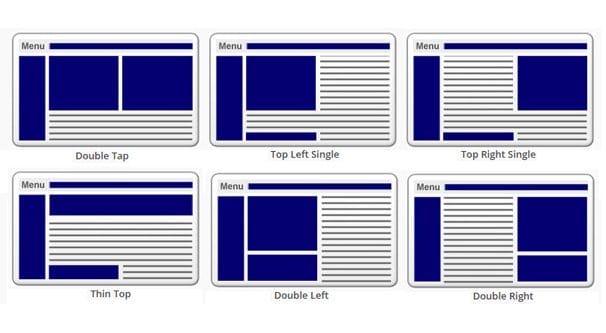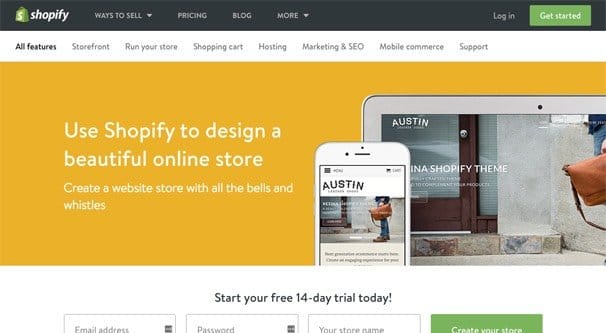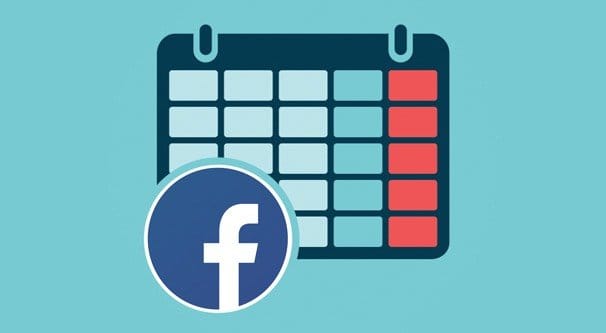 Written by ContentPowered.com
Written by ContentPowered.com
There are people out there who grow Facebook pages for the sake of having them. I’ve seen dozens that center themselves around a concept and grow into something larger. For example, the “I Feaking Love Science” page started out just growing a page around cool science facts and developments around the world. Over time it grew and grew, to its current nearly 25 million followers, and it has since expanded into an entire website of its own. It didn’t start with the website and grow the social pages as so many people do these days.
If you have a Facebook page with some level of following, with or without a website attached, there are a lot of ways to make money. Frankly, it’s easier to start with a Facebook page and build a monetized site than it is to start a site and try to build a Facebook following from it.
1. Sell Digital Content Directly
The first option is arguably the easiest among them. You don’t need an external site of any kind, though you can benefit if you have one. The simplest example of this is pretty easy to describe.
Write an ebook and publish it on the Amazon Kindle marketplace. Promote that ebook on your Facebook page. Whatever you were doing to grow your Facebook page to the heights it reached, keep doing that; just intersperse your posts with posts promoting the ebook. It’s simple, it’s easy, and you can even outsource writing the book by hiring a ghostwriter.
There are other sorts of digital content you can advertise and sell directly on Facebook. All you need is some kind of distribution platform. Ebooks are easy because Amazon and Barnes and Noble both have distribution platforms. If you’re selling, say, software, you’ll need to set up a site or sell it through something like Wix
2. Send Traffic to Affiliate Marketing Sites
This is another option you can use to make money by advertising on Facebook, but you will need to set up a site. A microsite with a dozen or so blog posts and product recommendation tables, laced with affiliate links, works well enough.
To discuss this topic in greater detail puts us into the affiliate marketing discussion, and there’s a lot going on with that topic. Your choice of niche, your ability to compel and convert visitors, and the viability of the sales you’re making all play a big part in how well you’re able to make money with this method.
On the plus side, I can guide you to this post so you know how you can and cannot use affiliate links on Facebook. If you’re lucky, you can broadcast your links directly to your audience rather than linking them to your site. George Takei does this a lot; all of his Amazon links hook you up with his code.
3. Send Traffic to Ads-Enabled Sites
Much like with affiliate marketing, you’re going to need to have a website for this method. You’ll need to have a site, though what kind of site is up to you. It doesn’t need to be anything more than a blog, or it can be a service provider, a storefront, or whatever else you want.
The idea is to lace the site with advertisements that make you money. Affiliate links work, but you can also use PPC links like Infolinks or Google’s AdWords text ads. There are a whole bunch of different ad networks you can explore to find ads that pay a decent amount for the traffic you send to them.
You’re going to be subject to a lot of diminishing filters for this method of making money, unfortunately. Out of your whole audience, only a small percentage see your post. Of them, only a few click through to the site. Of those, many of them will block ads or kill scripts that would track their value.
4. Sell Products Through a Facebook App Store
Facebook apps have fallen somewhat by the wayside in the last few years. They’ve been slowly moved further and further down the sidebar and there’s not as much room up top for them as there used to be. Gone are the days of the large icons up top.
That’s not to say you can’t still use them. All you need to do is set up one of the many Facebook tab commerce apps. Pick one and use it to set up a little storefront right there on Facebook.
Well, it’s not technically on Facebook. It’s a hosted microsite on whatever the hosting is for the app provider, which you configure and which users access via an iFrame on Facebook.
5. Sell Products Through a Website Storefront
The exact same concept as above can be applied to setting up your own storefront. You have two options for this; you can either set up a hosted solution on a site like Wix, or you can host your own storefront on whatever hosting and using whatever eCommerce system you want. The latter is more expensive but a lot more customizable and better for SEO in the long run.
From there, you can either set up your own iframe app – adapt the same sort of code as the previous example – or you can just refer people to your site. Promote products and link your audience to the product page, that sort of thing. Paid ads will help a lot here, because there’s not of leeway with promotional organic posts. Facebook and Facebook users both don’t like overt promotion on a consistent basis, so your reach and following will drop if you go too all-in.
6. Promote a Mobile App for Sale
Facebook can be used to promote things other than goods. One of the best options you can take, if you have the resources available to you, is to develop a mobile app. Over 50% of the traffic that browses Facebook every day is mobile traffic. If you can capitalize on a mobile audience by promoting a mobile app, you can find quite a bit of success.
What kind of mobile app should you make? That I can’t tell you. There’s so much possible variety, some that plays off your current presence and others that are out of left field, that it’s impossible to give you a recommendation. Find a niche and go for it if you have a good idea.
7. Promote a Mobile App with In App Purchases
In the previous example, I suggested a mobile app. This one is also for a mobile app, but the idea instead is to offer the app for free. You can monetize the app itself rather than monetizing Facebook. The app can offer in-app purchases, or it can have display ads, or both. It depends on what works for your app and what you can add to your code.
Some affiliate programs also do app affiliate links. You can promote an app you didn’t create, and get some money for the people who download it. This is going to be less lucrative than a good app, but sometimes it’ll be better than whatever app you throw together.
8. Promote Products with Exclusive Facebook Offers
If you’re selling products, you can do more than just post “hey, have you see X product? It’s cool you should buy it.” You can incentivize the traffic and the conversions. All you need to do is run offers, either as an organic thing or as a paid thing.
The organic way of running offers is to simple create the offer for a limited time on your site and promote it on Facebook. The alternative method is to use the ads system on Facebook to run offers. Either one will work, and you can use both if you want.
9. Sell Advertising Space on Your Feed
This method is a little frowned upon on Facebook, and there’s no easy way to advertise that you do it, but you can if you keep it under the table. The idea is to write posts that promote something – a product, a service, a blog – in exchange for a bit of cash from the owner of that thing. In a sense it’s a lot like affiliate marketing, except the payouts are generally higher and they aren’t predicated upon performance. People pay you for the post, and they get what they get, so long as you’re making a good faith effort to advertise them.
Just don’t tell people publicly that you’re willing to accept cash for posts; that’s going to get you flagged or banned by Facebook.
10. Sell Products Through a Third Party Service
You can design and sell products without having to do any of the product manufacturing, shipping, inventory, upkeep, or anything else. One of the biggest examples is the Teespring/Society6 method of creating art, putting it on various products, and selling it. These sites allow you to create an account and slap art on their inventory. They print the shirts or phone cases or socks or whatever else and sell them. You get a cut of the profits. It’s pretty simple and it’s a route that a lot of mid-range Facebook pages take, particularly artists.
11. Promote a Local Event with Your Vendor Presence
If your Facebook page happens to be centered primarily around a geographic location, you can use it to promote local events. You can drive a profit in a few different ways from this. One of them is to set up a vendor of your own at the local event you’re promoting, so that by promoting the event, you’re promoting yourself. Get more people to attend the event, and more people will find your storefront within it, so you can make more sales.
You can do the same thing with a local service; advertise to your local audience and get people to sign up for trial runs of the service.
12. Promote a Local Service to For Cash
This is very similar to posting content based on the payment you get from the owner of that content. The difference is it’s all local, so you can do your networking offline and stress the importance of both minimizing your obvious involvement with the payments, and avoid Facebook’s wrath.
I would essentially just start promoting an event and go through to talk to each vendor for the event. Set up a sample content schedule with the posts you have available to rent out and sell each of the slots. Now your followers think you’re promoting the event by promoting the businesses in it selflessly, but in reality you’re being paid to make those promotions.
13. Sell Your Services Growing a Page
There’s more to sell than just products, services, and posts. You’ve grown a Facebook page to its current level, and you’re achieving some amount of success. Others would like to reach that success. You can share your skills in a few ways. You can write and sell a book about it. You can sell a service where you write up a plan of action for the page owner. You can come in and manage things for an ongoing price, though if you don’t want your business to be managing Facebook pages, this might be a bit much.
14. Sell Your Industry Consulting Services
You may have expertise in an area beyond Facebook, and you can sell that expertise as well. I’ve seen several different folks on different social networks – Facebook, Twitter, Tumblr, and others – gain fame through managing a page and then say “oh by the way, I’m a freelance ___, feel free to hire me.”
They gain clients, they don’t sacrifice their pages to the whims of marketing, and it works out for everyone.
15. Build a Mailing List that Promotes Products
A mailing list has several benefits. For one thing, it’s a way to reach people independent of the low reach metrics on Facebook. It can be used to promote yourself or others, both organically and in a paid way. Plus, it’s value that will last beyond something happening to your Facebook page or your website. A newsletter can help with all of the above techniques as well, which is why I listed it last.






